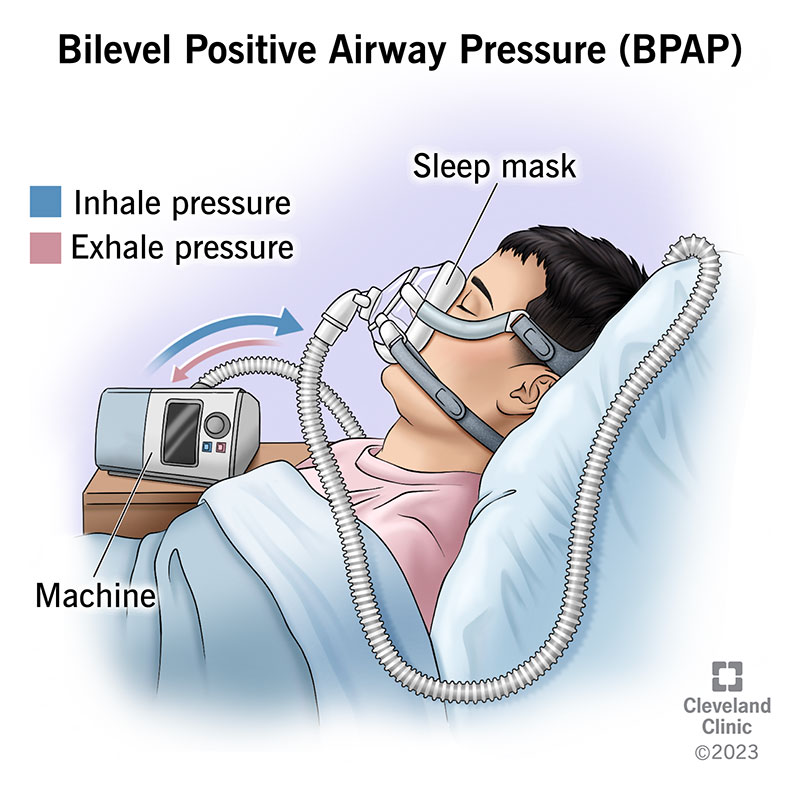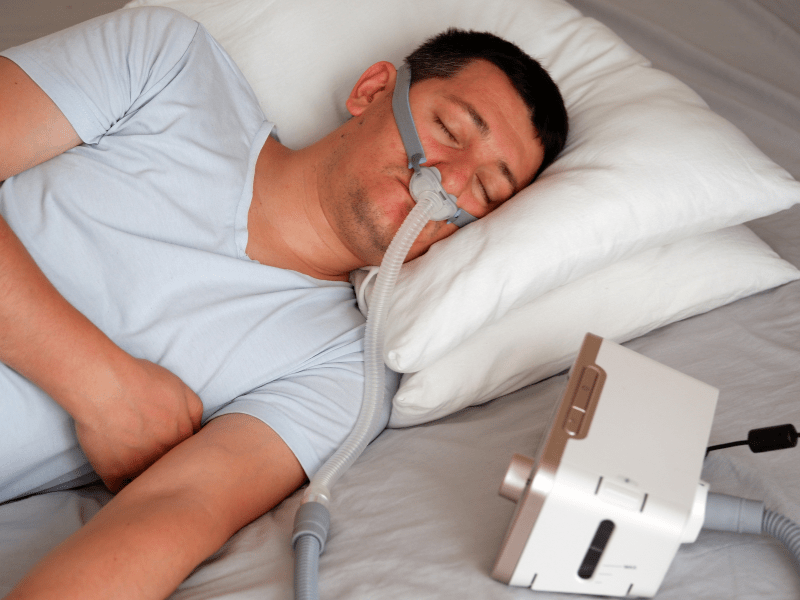Bipap vs. CPAP: Which Is the most effective for Your Rest Disorder?
When browsing the intricacies of rest conditions, the option between BiPAP and CPAP treatment is a crucial consideration. Each modality offers distinct advantages customized to certain problems, yet the choice pivots on private client needs and convenience degrees. While CPAP gives a constant air flow suitable for obstructive sleep apnea, BiPAP's double pressure setups may enhance convenience for those with even more elaborate respiratory issues. Understanding these differences can significantly impact therapy effectiveness, leaving one to ponder which alternative absolutely lines up with their health needs and way of life.
Comprehending Rest Disorders
Rest conditions include a series of problems that disrupt typical rest patterns, influencing both the quality and period of rest. These problems can materialize in numerous forms, consisting of sleeplessness, rest apnea, narcolepsy, uneasy leg syndrome, and parasomnias. Each condition offers distinct challenges, often causing significant daytime tiredness, cognitive problems, and emotional disruptions.
Insomnia is defined by problem dropping or staying asleep, while sleep apnea includes duplicated interruptions in breathing during rest, usually resulting in fragmented rest. Narcolepsy, on the various other hand, is marked by extreme daytime drowsiness and abrupt rest attacks. Troubled leg syndrome causes uneasy sensations in the legs, triggering an irrepressible urge to move them, which can additionally hinder the ability to drop off to sleep.
The effect of sleep conditions expands past private health and wellness, affecting total performance, relationships, and quality of life. Recognizing the particular nature of each problem is critical for effective diagnosis and treatment. As sleep health becomes progressively acknowledged as an essential part of general wellness, attending to these disorders is crucial for boosting both rest high quality and daily functioning.
Exactly How CPAP Works
Continuous Favorable Respiratory Tract Stress (CPAP) treatment is often utilized as a primary therapy for obstructive rest apnea (OSA) The device of CPAP includes using a device that delivers a constant stream of air through a mask put on during sleep. This air movement keeps favorable stress in the airway, preventing the collapse or blockage of the throat that can take place throughout sleep.
When a person takes in, the CPAP machine gives a continual flow of air, ensuring that the air passage stays open - BiPAP Rental. This not only reduces the signs and symptoms of OSA, such as snoring and interrupted sleep patterns, however also decreases the associated health and wellness risks, consisting of cardiovascular complications and daytime tiredness
The stress setups on a CPAP machine can be personalized to satisfy specific client needs, commonly determined through a sleep research study. In general, CPAP therapy has been revealed to dramatically improve the high quality of rest and total wellness for people suffering from obstructive rest apnea.
Exactly How BiPAP Works
BiPAP, or Bilevel Favorable Respiratory Tract Pressure, is a customized kind of non-invasive air flow that is specifically useful for individuals with problems such as complicated rest apnea or respiratory disorders. Unlike CPAP, which delivers a continuous stream of air at a solitary stress, BiPAP gives 2 distinct stress settings: a higher inspiratory pressure for inhalation and a lower expiratory pressure for exhalation. This dual-pressure technique permits much easier breathing, reducing the initiative needed during exhalation.
The device runs through a mask fitted over the nose or mouth, linked to a maker that produces air pressure. When the client inhales, the device delivers the higher stress to help with air flow, making certain that the respiratory tract stays open. Upon exhalation, the device immediately reduces the pressure, making it a lot more comfortable for the individual to breathe out.

Trick Differences Between BiPAP and CPAP

In contrast, BiPAP (Bilevel Favorable Airway Pressure) uses 2 various pressure settings: one for breathing and a reduced one for exhalation. This dual stress system allows for more comfortable breathing, particularly for clients that fight with breathing out versus a continuous pressure. BiPAP is typically recommended for people with complex sleep apnea, persistent obstructive lung illness (COPD), or those who need extra assistance during sleep.
Additionally, the intricacy of BiPAP tools normally results in a higher cost and requires much more mindful titration than CPAP. BiPAP Rental. Understanding these essential differences can aid in recognizing which device may be more suitable for specific sleep problems, establishing check out here the foundation for educated treatment decisions
Choosing the Right Therapy
Exactly how can one identify the most suitable therapy for handling sleep disorders? The decision in between BiPAP and CPAP therapy mainly hinges on the specific characteristics of the rest problem, the client's overall wellness, and their convenience with the gadget. CPAP, which provides a continual stream of air, is frequently recommended for obstructive sleep apnea (OSA) It keeps an open respiratory tract throughout rest, successfully protecting against hypopneas and apneas.
Conversely, BiPAP offers 2 levels of stress: one for inhalation and a lower one for exhalation. This dual stress system is beneficial for individuals with complex rest apnea or those that experience trouble exhaling versus a continuous stress. In addition, BiPAP is usually suggested for people with respiratory problems, such as chronic obstructive pulmonary illness (COPD), where differing pressure settings can enhance convenience and compliance.
Eventually, a thorough examination by a rest expert, consisting of a sleep research study, can assist identify which treatment straightens best with the individual's requirements. Elements such as convenience, convenience of use, and certain clinical problems ought to additionally be thought about to enhance treatment end results.
Verdict
In summary, both BiPAP and CPAP serve distinct functions in the monitoring of rest problems. CPAP is learn the facts here now reliable for obstructive rest apnea through consistent air flow, while BiPAP provides double pressure setups that boost convenience for those with complicated rest apnea or breathing concerns. The choice between these therapies should be guided by individual requirements and problems, requiring a detailed analysis by a rest expert to guarantee optimum treatment end results and boosted high quality of rest.

Generally, CPAP treatment has actually been shown to considerably boost the high quality of rest and total wellness for people suffering from obstructive sleep apnea.
BiPAP is often recommended for clients with complicated rest apnea, chronic obstructive pulmonary condition (COPD), or those that call for added assistance throughout rest.
CPAP is reliable for obstructive rest apnea via constant air flow, while BiPAP offers dual pressure settings that enhance comfort for those with complicated sleep apnea or breathing concerns.
Comments on “Advantages of Opting for BiPAP Rental for Home Therapy”